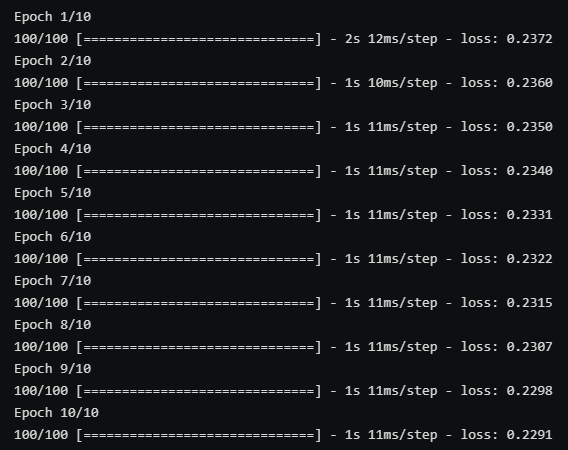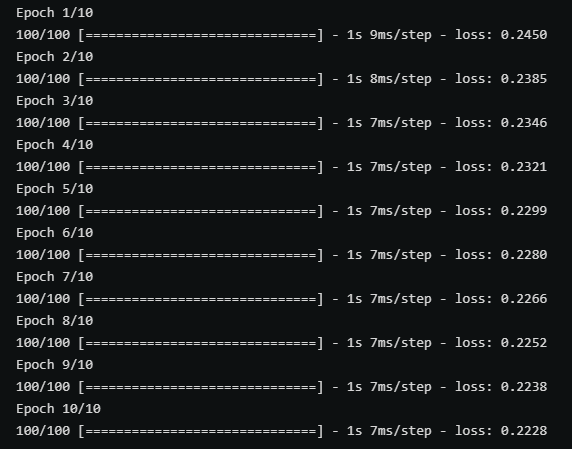TFRecord的写入与读取以及模板
Protocol buffers are Google's language-neutral, platform-neutral, extensible mechanism for serializing structured data.
Protocol buffers是由Google设计的无关程序语言、平台的、具有可扩展性机制的序列化数据结构。
The
tf.train.Examplemessage (or protosun) is a flexible message type that represents a{"string": value}mapping. It is designed for use with TensorFlow and is used throughout the higher-level APIs such as TFX.
tf.traom.Example是一种表示{“string”:value}映射关系的灵活的消息类型。它被设计用于TensorFlow以及更加高级的API。
写入
tf.train.Example
一个tf.train.Example的实例是构建的是数个{”string“: tf.train.Feature}映射。
其中,tf.train.Feature可以是以下三种,其他类型的数据格式可以通过一个或多个Feature组合描述:
- tf.train.BytesList
- tf.train.FloatList
- tf.train.Int64List
模板
import tensorflow as tf
with tf.io.TFRecordWriter("train.tfrecords","GZIP") as writer:
for i in range(200): # Assume there are 200 records
example_proto = tf.train.Example(
features=tf.train.Features(
feature= {
'feature0':
tf.train.Feature(float_list=tf.train.int64List(value=feature0)),
'feature1':
tf.train.Feature(float_list=tf.train.FloatList(value=feature1)),
'feature2':
tf.train.Feature(float_list=tf.train.BtyesList(value=feature2)),
'label':
tf.train.Feature(float_list=tf.train.int64List(value=[label])),
}
)
)
writer.write(example_proto.SerializeToString())
读取
tf.io.parse_single_example 和 tf.io.parse_example
One might see performance advantages by batching
Exampleprotos withparse_exampleinstead of using this function directly.
对Example protos分批并使用parse_example会比直接使用parse_single_example有性能优势。
模板
# with map_func using tf.io.parse_single_example
def map_func(example):
# Create a dictionary describing the features.
feature_description = {
'feature0': tf.io.FixedLenFeature([len_feature0], tf.int64),
'feature1': tf.io.FixedLenFeature([len_feature1], tf.float32),
'feature2': tf.io.FixedLenFeature([len_feature2], tf.int64),
'label': tf.io.FixedLenFeature([1], tf.int64),
}
parsed_example = tf.io.parse_single_example(example, features=feature_description)
feature0 = parsed_example["feature0"]
feature1 = parsed_example["feature1"]
feature2 = parsed_example["feature2"]
label = parsed_example["label"]
return image, label
raw_dataset = tf.data.TFRecordDataset("train.tfrecords","GZIP")
parsed_dataset = raw_dataset.map(map_func=map_func)
parsed_dataset = raw_dataset.batch(BATCH_SIZE)
以下代码和前者的区别在于map_func中使用tf.io.parse_example替换tf.io.parse_single_example,并在调用map方法前先调用batch方法。
# with map_func using tf.io.parse_example
def map_func(example):
# Create a dictionary describing the features.
feature_description = {
'feature0': tf.io.FixedLenFeature([len_feature0], tf.int64),
'feature1': tf.io.FixedLenFeature([len_feature1], tf.float32),
'feature2': tf.io.FixedLenFeature([len_feature2], tf.int64),
'label': tf.io.FixedLenFeature([1], tf.int64),
}
parsed_example = tf.io.parse_example(example, features=feature_description)
# features can be modified here
feature0 = parsed_example["feature0"]
feature1 = parsed_example["feature1"]
feature2 = parsed_example["feature2"]
label = parsed_example["label"]
return image, label
raw_dataset = tf.data.TFRecordDataset(["./1.tfrecords", "./2.tfrecords"])
raw_dataset = raw_dataset.batch(BATCH_SIZE)
parsed_dataset = raw_dataset.map(map_func=map_func)


以上两张图分别时使用带有parse_single_example和parse_example的map_func在训练中的性能对比,后者(parse_example)明显性能更优秀。
不定长数据的读写 RaggedFeature
对于不定长且未padding的数据,写入过程中和定长数据没有区别,但在读取过程中需要使用tf.io.RaggedFeature替代tf.io.FixedLenFeature。
def map_func(example):
# Create a dictionary describing the features.
feature_description = {
'feature': tf.io.RaggedFeature(tf.float32),
'label': tf.io.FixedLenFeature([1], tf.int64),
}
parsed_example = tf.io.parse_example(example, features=feature_description)
# feature = parsed_example["feature"]
feature = parsed_example["feature"].to_tensor(shape=[1,100])
label = parsed_example["label"]
return feature, label
raw_dataset = tf.data.TFRecordDataset("train_unpadding.tfrecords").batch(1000)
parsed_dataset = raw_dataset.map(map_func=map_func)
下图对比了是否对不定长数据进行padding分别在压缩和未压缩的情况下的文件大小。





 浙公网安备 33010602011771号
浙公网安备 33010602011771号